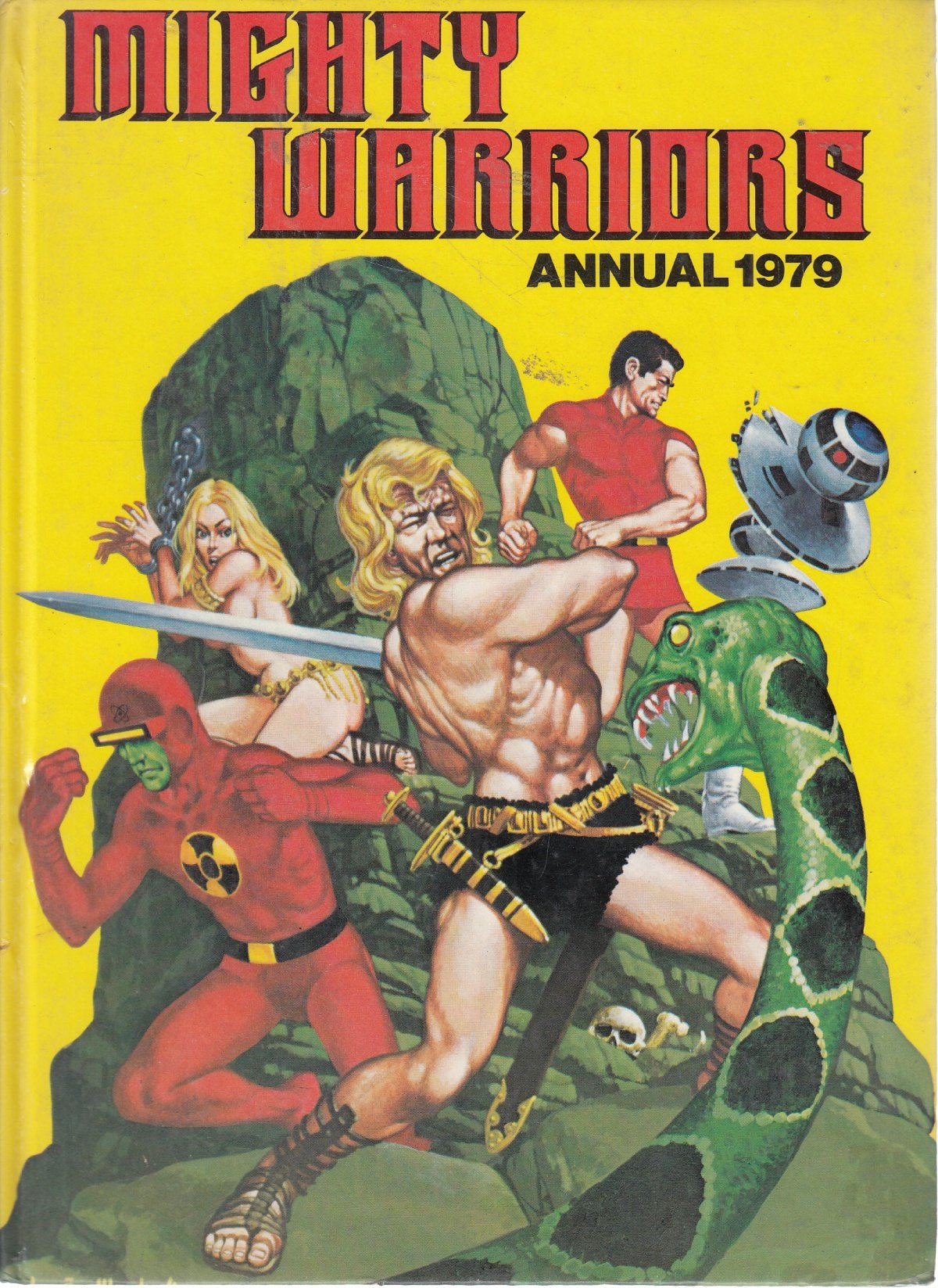
By Paul S. Newman, Don Glut, Dick Wood, José Delbo, Jesse Santos, Paul Norris & various (Stafford Pemberton Publishing)
ISBN: 0 86030 140 0(HB) ASIN: B001E37D7U
The comics colossus identified by fans as Dell/Gold Key/Whitman had one of the most complicated publishing set-ups in history but that didn’t matter to the kids of all ages who consumed their vastly varied product. Based in Racine, Wisconsin, Whitman was a crucial part of the monolithic Western Publishing and Lithography Company since 1915, and drew on the commercial resources and industry connections that came with editorial offices on both coasts (and even a subsidiary printing plant in Poughkeepsie, New York).
Another useful connection was with fellow Western subsidiary K.K. Publications (named for licensing legend Kay Kamen who facilitated extremely lucrative “license to print money†merchandising deals for Walt Disney Studios between 1933 and 1949).
From 1938 on, Western’s comic book output was released through a partnership deal with a “pulps†periodical publisher under the umbrella imprint Dell Comics – and again those creative staff and commercial contacts fed into the line-up of the Big Little, Little Golden and Golden Press books for children that featured in thousands of stores and newsstands. When the partnership ended in 1962 Western swiftly reinvented its comics division as Gold Key.
As previously cited, Western Publishing was a major player since comics’ earliest days, blending a huge tranche of licensed material including newspaper strips, TV and Disney titles (such as Nancy and Sluggo, Tarzan, or The Lone Ranger) with home-grown hits like Turok, Son of Stone and Space Family Robinson.
In the 1960s, during the camp/superhero boom these original adventure titles expanded to include Brain Boy, Nukla, M.A.R.S. Patrol, Total War (created by Wally Wood), Russ Manning’s Magnus, Robot Fighter and much more. There were even heroic classic monsters Dracula, Frankenstein and Werewolf which were utterly irresistible. The sheer off-the-wall lunacy of features like Neutro or Dr. Spektor I shall save for a future occasion…
Such output was a perfect source of material for British publishers whose regular audiences were profoundly addicted to TV and movie properties. For decades, Western’s comics from Frankenstein Jr. to Voyage to the Bottom of the Sea, Yogi Bear and the Beverly Hillbillies to Land of the Giants and Star Trek filled out Christmas Annuals, and along the way also slipped in a few original character concepts.
Despite supremely high quality material and passionate fan-bases, Western never really captured the media spotlight of DC or Marvel’s costumed cut-ups, and in 1984 – having lost or ceded their licenses to DC, Marvel and Charlton – closed the comics division.
crime-fighting iterations of classic movie
The company’s most recognisable stab at a superhero was an understated nuclear era star with the rather unwieldy codename Dr. Solar, Man of the Atom who debuted in an eponymous title dated October 1962, sporting a captivating painted cover by Richard M. Powers that made the whole deal feel like a grown up book rather than a mere comic.
Crafted by writers Paul S. Newman & Matt Murphy with art by Bob Fujitani, the 2-part origin detailed how a campaign of sabotage at research base Atom Valley culminated in the accidental transmutation of a scientist into a (no longer) human atomic pile with incredible, impossible and apparently unlimited powers and abilities. Of course, his very presence is lethal to all around him…
Here – sans any such useful background – the now well-established atomic troubleshooter battles his old cyborg enemy Nuro to prevent marauding energy beings using ‘The Ladder to Mars’ to invade Earth and solves ‘The Mystery Message’ before winning an outer space ‘Battle of the Electronic Fighters’. The done-in-one yarn originally appeared in Doctor Solar, Man of the Atom #27 (April 1969) crafted by Dick Wood & José Delbo.
During its lifetime the parent company was keenly attuned to trends, and when comic book Sword & Sorcery bloomed they had their own offering: a darkly toned barbarian blockbuster dubbed Dagar the Invincible. Reprinting the first issue origin of an orphan who became a vengeance-seeking mercenary ‘The Sword of Dagar’ is by Don Glut & Jesse Santos, providing motivating backstory, an epic quest and tragic doomed loves story culminating at the ‘Castle of the Skull’ as first witnessed in October 1972’s Tales of Sword and Sorcery – Dagar the Invincible #1.
Ending the outré adventure is a tale of Magnus Robot Fighter 4000 AD which comes from issue #25 (February 1969) of his US comic. The mighty mech masher was first seen in the UK as part of a Gold Key comic strip package deal comprising Tarzan, The Green Hornet, Lone Ranger, Phantom and Flash Gordon for weekly TV Tornado and here battles ‘The Micro-Giants’ – size-shifting alien automatons – and a nefarious human entrepreneur in a classy action-romp by an unidentified author and artists Paul Norris & Mike Royer.
Superb quality and a beguilingly off-beat feel makes these stories and this book a truly enticing prospect. Why don’t you give it a shot?
© MCMLXXVIII by Western Publishing Company, Inc. All rights reserved throughout the world.
